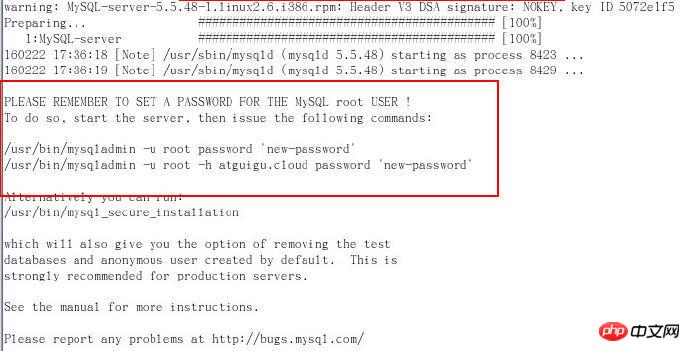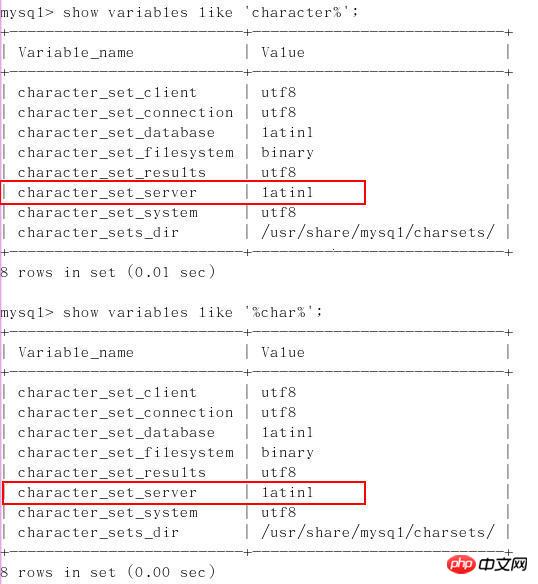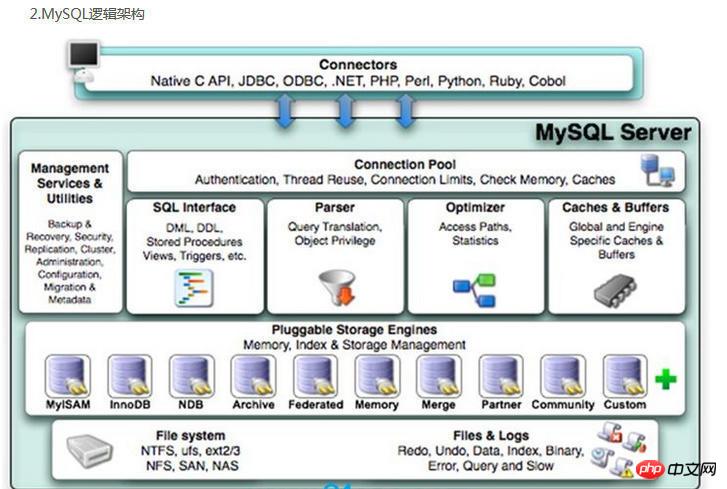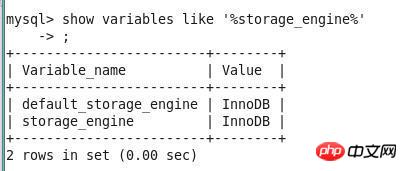An introduction to database architecture
1. Introduction to MySQL
Overview
MySQL is a relational database management system developed by the Swedish MySQL AB company and currently belongs to Oracle.
MySQL is a relational database management system that stores data in different tables instead of putting all data in one big warehouse, which increases speed and improves flexibility.
Mysql is open source, so you don’t need to pay extra.
Mysql supports large databases. Can handle large databases with tens of millions of records.
MySQL uses the standard SQL data language form.
Mysql can be used on multiple systems and supports multiple languages. These programming languages include C, C++, Python, Java, Perl, PHP, Eiffel, Ruby and Tcl, etc.
Mysql has good support for PHP, which is currently the most popular web development language.
MySQL supports large databases and data warehouses with 50 million records. The 32-bit system table file can support a maximum of 4GB, and the 64-bit system supports a maximum table file of 8TB.
Mysql can be customized and adopts the GPL protocol. You can modify the source code to develop your own Mysql system.
Advanced MySQL involves knowledge
mysql kernel
sql optimization siege lion
Optimization of mysql server
Various parameter constant settings
-
Query statement optimization
Master-slave replication
Software and hardware upgrade
- ##Disaster recovery backup
- sql programming
Complete mysql optimization requires a deep foundation. Large companies even have dedicated DBAs to write the above
- This time I installed MySQL 5.5, and the installation environment is CentOS 6.5
- version download Address official website download address
- Download
MySQL-Client andMySQL-Server
- downloads.skysql.com/archives/mysql-5.5/MySQL-server-5.5.16-1.rhel4.i386.rpm
- downloads.skysql.com/archives/mysql- 5.5/MySQL-client-5.5.16-1.rhel4.i386.rpm
- downloads.skysql.com/archives/mysql-5.5/MySQL-devel-5.5.16-1 .rhel4.i386.rpm
- Check whether MySQL is installed on the current system
- rpm -qa|grep -i mysql
- rpm -e --nodeps RPM package full name
- Pay attention to the tips
)
-

Set password prompt - View the mysql user and mysql group created during MySQL installation
- # cat /etc/passwd | grep mysql
- cat /etc/group | grep mysql
- ##View character set
- Modify the character set and modify the previously copied configuration file. (Detailed follow-up code)
- MySQL installation location
- ##show variables like 'character%';
-
show variables like '%char%'; - ##Character set
The default is that both the client and the server use latin1, so the characters will be garbled.
- View the installation directory under linux
ps -ef|grep mysql
-
:Copy the current5.5 version cp /usr/share/mysql/my-huge.cnf /etc/my.cnf -
cp /usr/share/mysql/my-default.cnf /etc/my.cnf##5.6 version chkconfig mysql onSet automatic startup# chkconfig --list | grep mysqlCheck whether automatic startup is set# /etc/init .d/mysql start# /etc/init.d/mysql stopor
- #service mysql start
service mysql stopView MySQL start and stop status:
# ps -ef | grep mysqlStart and stop operations:
Set up MySQL self-starting service- Modify the configuration file location
- Modify the character set and data storage path
- ##Query command:
The above is the detailed content of An introduction to database architecture. For more information, please follow other related articles on the PHP Chinese website!

Hot AI Tools

Undresser.AI Undress
AI-powered app for creating realistic nude photos

AI Clothes Remover
Online AI tool for removing clothes from photos.

Undress AI Tool
Undress images for free

Clothoff.io
AI clothes remover

Video Face Swap
Swap faces in any video effortlessly with our completely free AI face swap tool!

Hot Article

Hot Tools

Notepad++7.3.1
Easy-to-use and free code editor

SublimeText3 Chinese version
Chinese version, very easy to use

Zend Studio 13.0.1
Powerful PHP integrated development environment

Dreamweaver CS6
Visual web development tools

SublimeText3 Mac version
God-level code editing software (SublimeText3)

Hot Topics
 What is the architecture and working principle of Spring Data JPA?
Apr 17, 2024 pm 02:48 PM
What is the architecture and working principle of Spring Data JPA?
Apr 17, 2024 pm 02:48 PM
SpringDataJPA is based on the JPA architecture and interacts with the database through mapping, ORM and transaction management. Its repository provides CRUD operations, and derived queries simplify database access. Additionally, it uses lazy loading to only retrieve data when necessary, thus improving performance.
 iOS 18 adds a new 'Recovered' album function to retrieve lost or damaged photos
Jul 18, 2024 am 05:48 AM
iOS 18 adds a new 'Recovered' album function to retrieve lost or damaged photos
Jul 18, 2024 am 05:48 AM
Apple's latest releases of iOS18, iPadOS18 and macOS Sequoia systems have added an important feature to the Photos application, designed to help users easily recover photos and videos lost or damaged due to various reasons. The new feature introduces an album called "Recovered" in the Tools section of the Photos app that will automatically appear when a user has pictures or videos on their device that are not part of their photo library. The emergence of the "Recovered" album provides a solution for photos and videos lost due to database corruption, the camera application not saving to the photo library correctly, or a third-party application managing the photo library. Users only need a few simple steps
 How does Hibernate implement polymorphic mapping?
Apr 17, 2024 pm 12:09 PM
How does Hibernate implement polymorphic mapping?
Apr 17, 2024 pm 12:09 PM
Hibernate polymorphic mapping can map inherited classes to the database and provides the following mapping types: joined-subclass: Create a separate table for the subclass, including all columns of the parent class. table-per-class: Create a separate table for subclasses, containing only subclass-specific columns. union-subclass: similar to joined-subclass, but the parent class table unions all subclass columns.
 How steep is the learning curve of golang framework architecture?
Jun 05, 2024 pm 06:59 PM
How steep is the learning curve of golang framework architecture?
Jun 05, 2024 pm 06:59 PM
The learning curve of the Go framework architecture depends on familiarity with the Go language and back-end development and the complexity of the chosen framework: a good understanding of the basics of the Go language. It helps to have backend development experience. Frameworks that differ in complexity lead to differences in learning curves.
 Detailed tutorial on establishing a database connection using MySQLi in PHP
Jun 04, 2024 pm 01:42 PM
Detailed tutorial on establishing a database connection using MySQLi in PHP
Jun 04, 2024 pm 01:42 PM
How to use MySQLi to establish a database connection in PHP: Include MySQLi extension (require_once) Create connection function (functionconnect_to_db) Call connection function ($conn=connect_to_db()) Execute query ($result=$conn->query()) Close connection ( $conn->close())
 Hand-tearing Llama3 layer 1: Implementing llama3 from scratch
Jun 01, 2024 pm 05:45 PM
Hand-tearing Llama3 layer 1: Implementing llama3 from scratch
Jun 01, 2024 pm 05:45 PM
1. Architecture of Llama3 In this series of articles, we implement llama3 from scratch. The overall architecture of Llama3: Picture the model parameters of Llama3: Let's take a look at the actual values of these parameters in the Llama3 model. Picture [1] Context window (context-window) When instantiating the LlaMa class, the variable max_seq_len defines context-window. There are other parameters in the class, but this parameter is most directly related to the transformer model. The max_seq_len here is 8K. Picture [2] Vocabulary-size and AttentionL
 How to handle database connection errors in PHP
Jun 05, 2024 pm 02:16 PM
How to handle database connection errors in PHP
Jun 05, 2024 pm 02:16 PM
To handle database connection errors in PHP, you can use the following steps: Use mysqli_connect_errno() to obtain the error code. Use mysqli_connect_error() to get the error message. By capturing and logging these error messages, database connection issues can be easily identified and resolved, ensuring the smooth running of your application.
 Review! Comprehensively summarize the important role of basic models in promoting autonomous driving
Jun 11, 2024 pm 05:29 PM
Review! Comprehensively summarize the important role of basic models in promoting autonomous driving
Jun 11, 2024 pm 05:29 PM
Written above & the author’s personal understanding: Recently, with the development and breakthroughs of deep learning technology, large-scale foundation models (Foundation Models) have achieved significant results in the fields of natural language processing and computer vision. The application of basic models in autonomous driving also has great development prospects, which can improve the understanding and reasoning of scenarios. Through pre-training on rich language and visual data, the basic model can understand and interpret various elements in autonomous driving scenarios and perform reasoning, providing language and action commands for driving decision-making and planning. The base model can be data augmented with an understanding of the driving scenario to provide those rare feasible features in long-tail distributions that are unlikely to be encountered during routine driving and data collection.














